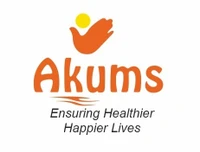
i
Filter interviews by
Akums Drugs & Pharmaceuticals Limited Interview Questions and Answers
63 Interview questions
IS 17893 pertains to the guidelines for the management of hazardous waste in India.
Focuses on the classification and handling of hazardous waste.
Provides standards for waste treatment and disposal methods.
Aims to protect human health and the environment from hazardous waste.
Includes examples like biomedical waste management and industrial waste protocols.
Fire requires oxygen to sustain combustion, typically around 16% concentration in the air.
Oxygen concentration in the atmosphere is about 21%.
Fire can sustain itself with oxygen levels as low as 16%.
Below 16%, combustion becomes difficult and may extinguish.
In confined spaces, oxygen levels can drop, increasing fire risk.
Examples: A candle burns steadily in normal air, but may extinguish in a low-oxygen environmen...
Vapor Cloud Explosion (VCE) refers to a rapid combustion of vapor clouds, posing significant safety risks in industrial settings.
VCE occurs when flammable vapors mix with air and ignite, leading to explosive forces.
Common in industries like oil and gas, where volatile substances are handled.
Example: A VCE can happen during a leak in a storage tank, creating a hazardous vapor cloud.
Prevention strategies include pro...
Vapor Cloud Explosion (VCE) is a hazardous event caused by the ignition of a vapor cloud, leading to explosive consequences.
VCE occurs when flammable vapors mix with air and form a cloud.
An ignition source, such as a spark or flame, can trigger a VCE.
Examples include incidents in chemical plants or oil refineries.
Preventive measures include proper ventilation and monitoring of vapor concentrations.
VCE can cause si...
Yes, I can work without SOPs by relying on my experience, adaptability, and problem-solving skills to ensure quality outcomes.
Experience: I have previously worked in dynamic environments where SOPs were not strictly followed, allowing me to adapt quickly.
Problem-Solving: I can analyze situations and make informed decisions based on best practices and past experiences.
Collaboration: I believe in leveraging team kno...
I utilize various chemical equipment for precise measurements, reactions, and analyses in production chemistry.
Use a balance for accurate weighing of chemicals, ensuring precision in formulations.
Employ a pH meter to monitor acidity or alkalinity during reactions.
Utilize a spectrophotometer for analyzing the concentration of solutions.
Operate a centrifuge to separate components based on density.
Implement a gas chr...
Acids are substances that donate protons, while alkalis are bases that accept protons, leading to neutralization reactions.
Acids have a pH less than 7; examples include hydrochloric acid (HCl) and sulfuric acid (H2SO4).
Alkalis have a pH greater than 7; examples include sodium hydroxide (NaOH) and potassium hydroxide (KOH).
The reaction between an acid and an alkali is called neutralization, producing water and a sa...
Chemical bonds are interactions that hold atoms together in molecules, primarily ionic, covalent, and metallic bonds.
Ionic Bonds: Formed by the transfer of electrons (e.g., NaCl).
Covalent Bonds: Formed by the sharing of electrons (e.g., H2O).
Metallic Bonds: Involve a 'sea of electrons' shared among metal atoms (e.g., copper).
Hydrogen Bonds: A weak bond between a hydrogen atom and an electronegative atom (e.g., wat...
Organic compounds contain carbon and are typically associated with living organisms, while inorganic compounds do not primarily contain carbon.
Organic compounds primarily contain carbon atoms, e.g., hydrocarbons like methane (CH4).
Inorganic compounds may contain carbon but are not primarily based on it, e.g., sodium chloride (NaCl).
Organic compounds often include functional groups like -OH (alcohols) or -COOH (car...
Mastering chemistry requires effective study techniques, practice, and a solid understanding of concepts.
Understand the fundamentals: Grasp basic concepts like atomic structure and chemical bonding.
Practice regularly: Solve problems daily to reinforce learning, such as balancing chemical equations.
Utilize visual aids: Diagrams and models can help visualize complex structures, like molecular geometry.
Form study gro...
Akums Drugs & Pharmaceuticals Limited Interview Experiences
313 interviews found
I appeared for an interview before May 2024, where I was asked the following questions.
- Q1. What development activities should be undertaken for a regulated market?
- Q2. What are the guidelines for product development, and how do you determine the shelf life of drug products?
I applied via Company Website and was interviewed in Sep 2024. There was 1 interview round.
(7 Questions)
- Q1. Related Manufacturing process
- Q2. Related to your skills
- Q3. Related to material
- Q4. Related to machine operating systems
- Q5. Personal hygiene and environmental handling
- Q6. Related to raw material inspection and varification of weight.
- Q7. Too take personal hygiene and environmental handling practice.
- Ans.
Maintaining personal hygiene and environmental practices is crucial for safety and efficiency in production operations.
Wash hands regularly, especially before handling products or equipment.
Use personal protective equipment (PPE) like gloves and masks to prevent contamination.
Keep work areas clean and organized to minimize hazards and improve efficiency.
Dispose of waste materials properly to prevent environmental conta...
Interview Preparation Tips
- Manufacturing
Please si told to me directly decide
You with my experience and skills
Disqus
Thanks and regards
Nakul.
I appeared for an interview in Jun 2025, where I was asked the following questions.
- Q1. Capsule ,types of capsule, tablet ,types of tablet solvent sterilization solvent Autoclave
- Q2. Capsule, types of capsule tablet, types of tablet solvent, crystallization, solvent ,Autoclave father of pharmacy,
Interview Preparation Tips
I appeared for an interview in Jun 2025, where I was asked the following questions.
- Q1. Capsule ,types of capsule tablet,types of tablet sterilization autoclave solvent solution
- Q2. Capsule types of capsule tablet types of tablet stallization autoclave solvent solution
Interview Preparation Tips
I appeared for an interview in Jun 2025, where I was asked the following questions.
- Q1. Capsule tablet sterilization autoclave solvent
- Q2. Capsule types of capsule tablet types of tablet sterilization autoclave solvent solution
- Q3. Capsule , types of capsule tablet, types of tablet sterilization watercolor solution solvent
I appeared for an interview in Jul 2025, where I was asked the following questions.
- Q1. Name and manufacturing
- Q2. Acptic area knowledge
- Q3. Machine learning
I appeared for an interview in Jun 2025, where I was asked the following questions.
- Q1. Name , address
- Q2. Family education
Interview Preparation Tips
I appeared for an interview in Aug 2024.
(2 Questions)
- Q1. Tell me about introduction
- Ans.
Introduction is the initial part of a process or presentation where key information is provided.
Introduction sets the tone for what is to come
It provides background information
It may include an overview of the main points to be discussed
- Q2. Can you explain one skills
- Ans.
One important skill for a Quality Assurance Supervisor is attention to detail.
Attention to detail is crucial for identifying and resolving quality issues.
Being meticulous in reviewing processes and documentation is key.
Examples include catching errors in product specifications or identifying trends in quality control data.
(4 Questions)
- Q1. What are the tablet
- Q2. Which method to use formulation of tablet
- Ans.
The method for formulation of tablets can vary depending on the specific requirements of the drug and desired characteristics of the tablet.
Consider the physicochemical properties of the drug substance
Choose appropriate excipients based on compatibility and functionality
Select a suitable manufacturing method such as direct compression, wet granulation, or dry granulation
Optimize the formulation for desired release prof...
- Q3. What are the clinical trials
- Q4. Types of capsule
I appeared for an interview in Mar 2025, where I was asked the following questions.
- Q1. What tests are performed for quality control in the production process?
- Ans.
Quality control tests ensure product consistency, safety, and compliance with regulations during production.
Physical tests: Measure properties like viscosity, density, and pH.
Chemical tests: Analyze composition and concentration of active ingredients.
Microbiological tests: Check for contamination by bacteria, fungi, or viruses.
Stability tests: Assess how products maintain quality over time under various conditions.
Pack...
- Q2. What are the tips to get top scores in Chemistry?
- Ans.
Mastering chemistry requires effective study techniques, practice, and a solid understanding of concepts.
Understand the fundamentals: Grasp basic concepts like atomic structure and chemical bonding.
Practice regularly: Solve problems daily to reinforce learning, such as balancing chemical equations.
Utilize visual aids: Diagrams and models can help visualize complex structures, like molecular geometry.
Form study groups: ...
- Q3. What are the areas of practice for pharmacists?
- Q4. Can you describe the typical QA process in a pharmaceutical manufacturing environment?
Interview Preparation Tips
I appeared for an interview in Apr 2025, where I was asked the following questions.
- Q1. What is anaerobes?
- Q2. What is e-coli and significant of e-coli?
Interview Preparation Tips
I appeared for an interview in Mar 2025, where I was asked the following questions.
- Q1. What are acids and alkalis and what is the reaction between them?
- Ans.
Acids are substances that donate protons, while alkalis are bases that accept protons, leading to neutralization reactions.
Acids have a pH less than 7; examples include hydrochloric acid (HCl) and sulfuric acid (H2SO4).
Alkalis have a pH greater than 7; examples include sodium hydroxide (NaOH) and potassium hydroxide (KOH).
The reaction between an acid and an alkali is called neutralization, producing water and a salt.
Fo...
- Q2. What is the difference between organic and inorganic compounds?
- Ans.
Organic compounds contain carbon and are typically associated with living organisms, while inorganic compounds do not primarily contain carbon.
Organic compounds primarily contain carbon atoms, e.g., hydrocarbons like methane (CH4).
Inorganic compounds may contain carbon but are not primarily based on it, e.g., sodium chloride (NaCl).
Organic compounds often include functional groups like -OH (alcohols) or -COOH (carboxyl...
- Q3. What are the different types of chemical bonds?
- Ans.
Chemical bonds are interactions that hold atoms together in molecules, primarily ionic, covalent, and metallic bonds.
Ionic Bonds: Formed by the transfer of electrons (e.g., NaCl).
Covalent Bonds: Formed by the sharing of electrons (e.g., H2O).
Metallic Bonds: Involve a 'sea of electrons' shared among metal atoms (e.g., copper).
Hydrogen Bonds: A weak bond between a hydrogen atom and an electronegative atom (e.g., water).
V...
- Q4. How do you use different chemical equipment?
- Ans.
I utilize various chemical equipment for precise measurements, reactions, and analyses in production chemistry.
Use a balance for accurate weighing of chemicals, ensuring precision in formulations.
Employ a pH meter to monitor acidity or alkalinity during reactions.
Utilize a spectrophotometer for analyzing the concentration of solutions.
Operate a centrifuge to separate components based on density.
Implement a gas chromato...
Interview Preparation Tips
Top trending discussions






Akums Drugs & Pharmaceuticals Limited Interview FAQs
Some of the top questions asked at the Akums Drugs & Pharmaceuticals Limited interview -
The duration of Akums Drugs & Pharmaceuticals Limited interview process can vary, but typically it takes about less than 2 weeks to complete.
Tell us how to improve this page.
Akums Drugs & Pharmaceuticals Limited Interviews By Designations
- Akums Drugs & Pharmaceuticals Limited Officer Interview Questions
- Akums Drugs & Pharmaceuticals Limited Executive Interview Questions
- Akums Drugs & Pharmaceuticals Limited Senior Executive Interview Questions
- Akums Drugs & Pharmaceuticals Limited Assistant Manager Interview Questions
- Akums Drugs & Pharmaceuticals Limited Deputy Manager Interview Questions
- Akums Drugs & Pharmaceuticals Limited Executive Assistant Interview Questions
- Akums Drugs & Pharmaceuticals Limited Manager Interview Questions
- Akums Drugs & Pharmaceuticals Limited Quality Control Officer Interview Questions
- Show more
Interview Questions for Popular Designations
Overall Interview Experience Rating
based on 329 interview experiences
Difficulty level
Duration
Interview Questions from Similar Companies
Akums Drugs & Pharmaceuticals Limited Reviews and Ratings
based on 2.1k reviews
Rating in categories
|
Officer
582
salaries
| ₹1.8 L/yr - ₹5 L/yr |
|
Executive Assistant
402
salaries
| ₹2.5 L/yr - ₹6 L/yr |
|
Executive
263
salaries
| ₹3.7 L/yr - ₹8.2 L/yr |
|
Assistant Manager
189
salaries
| ₹6.3 L/yr - ₹14 L/yr |
|
Production Officer
167
salaries
| ₹2.2 L/yr - ₹5.2 L/yr |

Cipla

Dr. Reddy's

Sun Pharmaceutical Industries

Lupin
- Home >
- Interviews >
- Akums Drugs & Pharmaceuticals Limited Interview Questions













